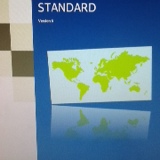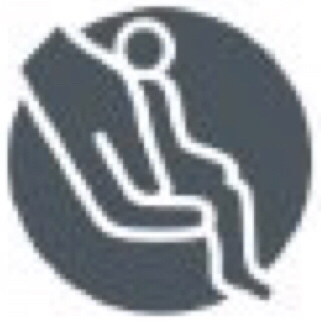Information
-
Document No.
-
Audit Title
-
Client / Site
-
Conducted on
-
Prepared by
-
Location
-
Personnel
14.1 - INTAKE CHECKS (BASE)
-
Controls on the acceptance of raw materials and packaging must ensure that these do not compromise the safety, legality, integrity or quality of products.
-
All raw materials including packaging must be checked by trained staff on receipt according to documented procedures and against agreed specifications.
-
The type of checks taken on intake must be based on risk assessment.
-
The checks must include as a minimum: - supplier is approved - hygiene condition of vehicle – must be well maintained and in good hygienic condition without cross contamination or taint risks - packaging integrity - evidence of pest infestation - date/lot coding - temperature (where required) - product inspection to demonstrate compliance to specification (which must be agreed and include quality standards) - pallet condition - whether any segregation controls are necessary in storage or production
-
Risk assessment may also dictate that checks include: - assessment against reference sample - Certificate of Analysis - product sampling for retention or shelf life - product testing (microbiological/chemical/physical/organoleptic as appropriate)
14.2 - NON CONFORMING MATERIALS (BASE)
-
Non-Conforming materials must be rejected at intake. Where this is not possible these materials must be ‘quarantined’ and identified.
-
A segregated area must be identified for the quarantine of raw materials, packaging or finished products. The location of these materials must pose no risk to other materials
-
Where a computer based system is used, this must render the material quarantined and unavailable for use.
14.3 - DELIVERY VEHICLE SECURITY (BASE)
-
Procedures must be in place to quarantine and risk assess any products where the safety or quality has potentially been affected because of access by unauthorised people at any point in the journey
-
Any material deemed to be potentially affected after risk assessment must be suitably isolated and securely disposed of.
-
Your Customer Technical contact must be informed and be involved in the final decision concerning the use and/or disposal of produce from the affected load.
14.4 - STOCK ROTATION AND MATERIAL CONTROL (BASE)
-
A stock rotation system must be in place to ensure that raw materials are used within the agreed shelf-life.
-
Material received first must be used first (First in – First out.) In the event that other factors determine which order stock is used evidence of that decision-making must be available e.g. cheese maturation.
14.5 - PART USED RAW MATERIALS (BASE)
-
Opened or part used raw materials batches (including any used for development work) must be effectively controlled including labelling, reclosing, covering (where possible) and protected from the environment.
14.6 - SEGREGATION DURING STORAGE AND PROCESSING (BASE)
-
Risk assessment must identify materials which need segregation during storage and processing e.g. chemicals, organic, allergens, sensitive materials, those susceptible to taint.
-
Where required, suitable segregation controls must be used to reduce the risk of cross contamination or taint, and to retain the identity of the product.
-
If dedicated lines are not in place for materials requiring segregation, the scheduling of production and cleaning must ensure the risk of cross–contamination is minimised.
-
All equipment (including production lines and utensils) used for materials requiring segregation must be cleaned using a method which removes any risk of cross–contamination e.g. chemical cleaning, hot water cleaning, (equipment dismantled where possible), prior to use for products not requiring segregation. The type of cleaning must be selected based on site risk assessment and full validation and verification of the cleaning process.<br><br><br>
-
Utensils used in preparation of, or associated with products containing sensitive materials must be colour coded and only be used for those products.
14.7 - SEGREGATION COSTUMER REQUIREMENT (e.g. TESCO) (BASE)
-
Where applicable the site must comply with the requirements as detailed in Customer Requirements for Suppliers 60500 – Site segregation management.
14.8 - STORAGE OF RAW MATERIALS, PACKAGING AND EQUIPMENT (BASE)
-
Where external storage of raw materials, packaging and equipment is unavoidable, items must be secure, protected from deterioration, contamination and pests, and must be inspected or decontaminated prior to use.
-
This includes all Customer reusable product crates/trays.
14.9 - HOLD AND RELEASE (BASE)
-
A documented procedure for risk assessment must be in place to manage the release of quarantined raw materials and packaging.
-
The risk assessment may include the following, although this is not an exhaustive list: - the issue that led to holding the material (including processing failure) - the intended use of the material - the significance of the issue
-
Records must be kept of products on hold and released. This must include as a minimum, although this is not an exhaustive list: - checks to ensure all affected product has been isolated - total quantities - identification codes<br>- the time and date raw materials or packaging is put on hold and released - who released the raw materials or packaging, and under what conditions (e.g. reworking, processing as normal, extra checks, rejecting to supplier, disposal etc.)
14.10 - OPENING AND DECANTING (MEDIUM)
-
Effective outer packaging removal procedures must be in place for raw materials and packaging.
-
A risk assessment must be conducted prior to the use of cardboard in production areas.
-
The method of opening and decanting from outer packaging must minimise the risk of contamination by the packaging (e.g. paper, plastic, cardboard, or string.)
14.10.1 - OPENING AND DECANTING (HIGH)
-
Cardboard and paper outer packaging must not be permitted in the High area.
-
Where it is not possible to remove cardboard outer packaging, e.g. winding tubes for films and labels, it must be clean.
14.11 - MATERIAL AND PRODUCT TRANSFER (HIGH)
-
Raw materials and packaging must be transferred to High areas using either heat treatment or non-heat treatment/verification as listed below.
-
The transfer process must be validated, verified and monitored.
-
Heat treatment may include, although this is not an exhaustive list:<br>- the use of straight through continuos ovens and frying equipment (fully fried not flash fried)<br>- cooking items and then pumping through a wall into the area - cooking items in open kettles, pans and transferring over a dividing barrier - cooking items through a double door oven system
-
Non heat treatment/verification may include, although this is not an exhaustive list: - the use of disinfectant in troughs, tanks and spray tunnels - transfer of packaging using double bagging - the use of Ultra Violet radiation (UV) and/or ozone - ingredients could also be pumped from large sealed containers (e.g. palletainers, pallecons) through to High area e.g. cream, oil - frequent swabbing of packaging
14.12 - FINISHED PRODUCT TRANSFER TO HIGH AREAS (HIGH)
-
Risk assessment must be carried out and appropriate controls put in place before packed product is allowed to be transferred from non-High to High areas.
14.13 - RAW MATERIAL SHELF LIFE (BASE)
-
Open raw material shelf life must be established and labelled where necessary when the original pack physical state has been changed (e.g. de-canning, breaking of vacuum seal, freezing of fresh materials, de-frosting etc).
-
Where products are received fresh and subsequently frozen the site must demonstrate the product is suitable for freezing. Details must be included in the raw material specification and the site must demonstrate it was in-life prior to freezing.
14.14 - PROCESS CONTROL (BASE)
-
Relevant controls and records must be in place during the process to ensure each batch conforms to the product specification.
14.15 - WORK IN PROGRESS (BASE)
-
Work in progress (WIP) must be clearly labelled with internal use/process by dates, time, and product details and protected from contamination where necessary.
-
WIP shelf-life must be established with reference to the maximum total product shelf-life.
14.16 - PRODUCT OR PROCESS DEVIATION (BASE)
-
If the finished product deviates from the agreed specification your Customer Technical contact must be notified and the product must be quarantined pending risk assessment.
-
Customer must be notified immediately of any illegal and/or unsafe products which have been produced and dispatched.
-
If the product or process deviates from specification or set procedures, then root cause analysis and correct actions must be taken and documented.
14.17 - ENVIRONMENTAL CONTROL (BASE)
-
Where applicable raw materials and products must be stored at the appropriate temperature, humidity or atmosphere.
-
Where the environment is controlled a monitoring system must be in place.
-
The monitoring process may be manual checks or an automated system. But must be capable of retaining a history of the storage conditions.
-
When in use the monitoring system must be continuous and operate within set ranges and it must be monitored outside of normal working hours, where the environmental control is critical to product safety.
-
Procedures must be in place to take appropriate corrective actions when the environment is found to be outside the specified tolerance.
14.18 - PRODUCTION TRAYS AND CONTAINERS (BASE)
-
Trays/containers of work in progress or finished product must not be placed directly on the floor. Where pallets are used to keep trays/containers off the floor, these must be clean and free of potential contamination.
-
Waste trays/containers must be solid with no holes and visibly different to those used in production.
14.19 - START UP AND CHANGE OVER CONTROL (BASE)
-
At start up and changeovers checks of the production line must be carried out to ensure that lines have been suitably cleaned and are ready for production.
-
These checks must also ensure that at start up and changeovers production lines are clear of all previous product, packaging and any other foreign object contamination risks.
14.20 - SHELF LIFE AND SAMPLE RETENTION (BASE)
-
Systems for managing minimum and maximum shelf-life when delivered to Customer must be in place (e.g. minimum number of days a product must have until the end of its shelf life, when received by Customer). This must take into account any intermediate steps in the supply chain.
-
The retention period and storage conditions for shelf life samples must be agreed with your Customer Technical contact and documented in the product specification.
14.21 - PRODUCT RELEASE (BASE)
-
The site must ensure that only product that meets the agreed specifications is released for despatch.
-
The site must ensure that product is not released for despatch unless all agreed procedures have been followed.
14.22 - REWORK (BASE)
-
The use of rework must be detailed in the Customer specification, including the percentage permitted.
-
Where rework is permitted and used, this must be appropriately controlled, must not negatively affect product quality, safety or legality, and the final product must meet the Customer specification.
-
Where rework is permitted, it must all be traceable. A break in the rework usage must occur at a defined frequency.
-
A rework shelf-life must be established.
14.23 - RE-LABELLING (BASE)
-
Replacement of product labels due to printing faults or incorrect labelling must be completed in a controlled manner and records must be retained including the reasons for re-labelling. This may only be carried out with written approval from your Customer Technical contact
-
Over-labelling of product labels must not be permitted.
14.24 - PRODUCT RETURNS (BASE)
-
A system must be in place to manage product which has been rejected and is returned to the site.
-
Product rejected by Customer for quality reasons may only be reworked and/or re-delivered to Customer following authorisation by your Technical contact.
-
Re-labelling of returned/rejected products may only be carried out with written approval from your Customer Technical contact.
-
Where required there must be no break in the chill chain for product which has been returned to site if this is intended for return to Customer.
14.25 - CONTROLLED WASTE (BASE)
-
Controlled waste must be suitably segregated and managed. Waste must be collected in identified containers.
14.25.1 - CONTROLLED WASTE (MEDIUM)
-
Controlled waste must be removed from open product areas in such a way that it does not present a cross contamination risk.
14.25.2 - CONTROLLED WASTE (HIGH)
-
Waste must be removed from High areas through a one way system.
14.26 - FINISHED PRODUCT DISPOSAL AND SURPLUS STOCK (BASE)
-
All product disposal routes must be agreed with your Customer Technical contact.
-
Any rejected product must be securely disposed of through an authorised route. In countries where secure disposal is not possible the Customer packaging must be removed or defaced.
-
The site must have full control over surplus stock and know the quantities of product in the event this information is needed for mass balance exercises.
-
Prior to any surplus stock being made available for purchase by site staff, Customer branded packaging must be removed or defaced.
-
Where it is not possible to remove the packaging, the barcode and all references to Customer must be removed or permanently masked. This includes the Customer name, address, trademarks and any other indications of the Customer identity.
-
Where surplus stock is donated to charitable organisations, the site must ensure the product is adequately controlled by the organisation.
14.27 - MODIFIED ATMOSPHERE PACKAGING (BASE)
-
All chilled foods packed in a modified atmosphere must comply with the Campden BRI Guideline no. 11 ‘The manufacture of vacuum and modified atmosphere packed chilled foods: a code of practice’ second edition 2009 (www.campden.co.uk)
14.28 - COOKED BULK MEATS (BASE)
-
All cooked bulk meats must comply with the Campden BRI Review No. 8 ‘Identification and prevention of hazards associated with slow cooling of hams and other large cooked meats and meat products’ 1998.












